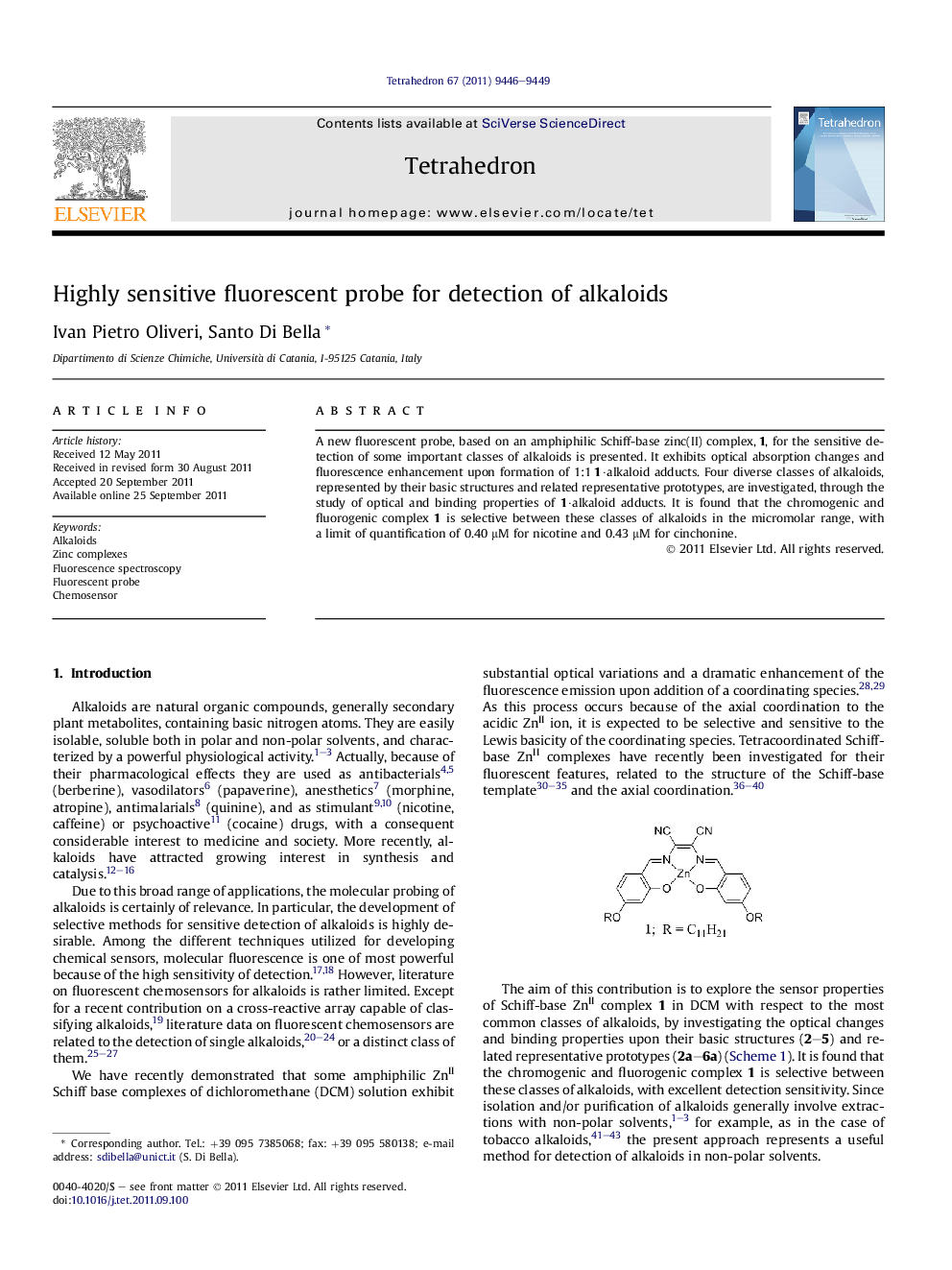| Article ID | Journal | Published Year | Pages | File Type |
|---|---|---|---|---|
| 5220197 | Tetrahedron | 2011 | 4 Pages |
A new fluorescent probe, based on an amphiphilic Schiff-base zinc(II) complex, 1, for the sensitive detection of some important classes of alkaloids is presented. It exhibits optical absorption changes and fluorescence enhancement upon formation of 1:1 1·alkaloid adducts. Four diverse classes of alkaloids, represented by their basic structures and related representative prototypes, are investigated, through the study of optical and binding properties of 1·alkaloid adducts. It is found that the chromogenic and fluorogenic complex 1 is selective between these classes of alkaloids in the micromolar range, with a limit of quantification of 0.40 μM for nicotine and 0.43 μM for cinchonine.
Graphical abstractFigure optionsDownload full-size imageDownload as PowerPoint slide
